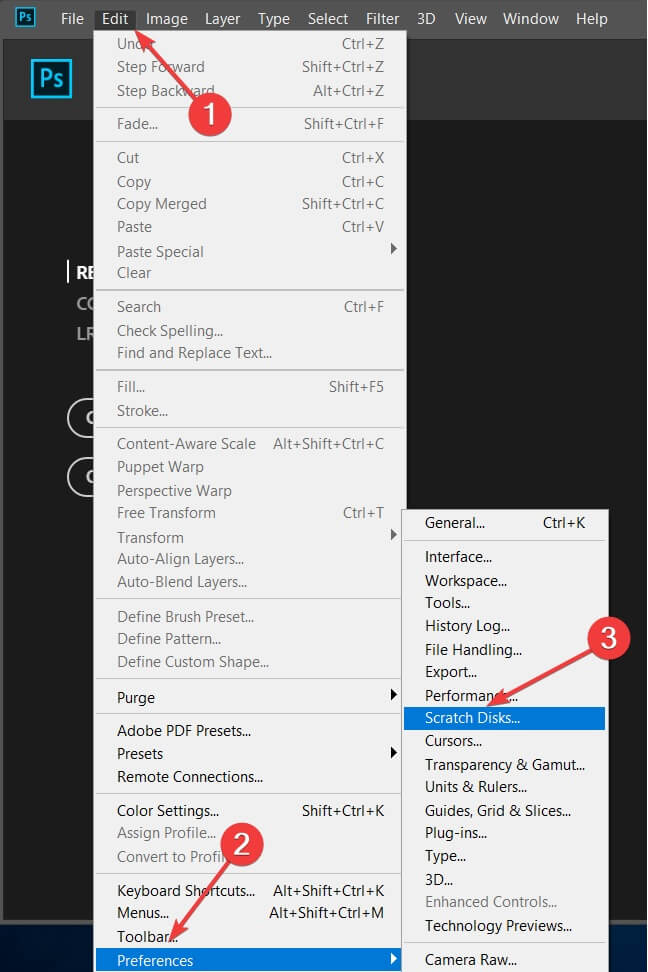
Photoshop's temp files are typically named ~PST#.tmp on Windows and Temp# on Macintosh, where # is a series of numbers. If Photoshop is shut down improperly or crashes in the middle of an editing session, this can leave fairly large temporary files behind on your scratch disk. Note: If your computer has a fast solid state disk drive (SSD), you should use the SSD as your scratch disk, even if it is your system drive. Other useful guidelines for setting scratch disks are to avoid using the same drive where your operating system is installed, avoid using a drive where the files you edit are stored, and don't use network or removable drives for a scratch disk. Although Photoshop will function with a single scratch disk on the system partition, you can improve performance by setting the scratch disk to be the fastest drive in your system. Many power users like to create a dedicated hard drive partition for the Photoshop scratch disk. You can change the scratch disk location and add multiple scratch disks from Photoshop Preferences (File menu > Preferences > Performance): If you only have one hard drive or partition in your computer, then the scratch disk will be the drive where your operating system is installed (the C drive on a Windows system). Photoshop uses your hard drive as temporary "swap" space, or virtual memory, when your system does not have enough RAM to perform an operation. The Photoshop scratch disk is your hard drive. What is the Photoshop Scratch Disk? How Do You Fix "Scratch Disk Full" Errors?

See below for more information about "Scratch disk" and how to fix the error. You need to free up space on your hard drive.


 0 kommentar(er)
0 kommentar(er)
